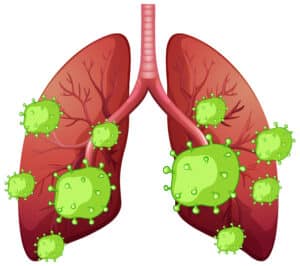Pneumonia kills more children than any other infectious disease, but why does it continue to persist? | Explained
With the rising incidence of pneumonia among children in India, it becomes crucial to understand why this burden remains, the gaps in prevention and care, and whether India has a strong strategy in place to tackle the disease
Author
Author
- admin / 3 weeks

- 0
- 8 min read

Author
Pneumonia continues to be one of the leading causes of death among children worldwide. Despite being both preventable and treatable, it kills more children each year than any other infectious disease.
According to UNICEF, pneumonia kills more than 7 lakh children under the age of five annually. This translates to nearly 2,000 deaths every day, including around 1.9 lakh newborns. Globally, there are more than 1,400 cases of pneumonia per 1 lakh children, which means about one case per 71 children each year. The highest incidence is recorded in South Asia with 2,500 cases per 1 lakh children, followed by West and Central Africa with 1,620 cases per 1 lakh children.
Two-thirds of all pneumonia and diarrhoea-related deaths are concentrated in just 15 countries. Alarmingly, India and Nigeria together account for nearly half a million of these deaths. In India, the death rate in children under five due to pneumonia was 6.3 per 1,000 live births in 2016. The total number of deaths among children under five due to the disease stood at 1,58,176.
Even though these numbers represent an avoidable tragedy, they continue to persist. With the rising incidence of pneumonia among children in India, it becomes crucial to understand why this burden remains, what gaps exist in prevention and care, and whether India has a strong strategy in place to tackle pneumonia.
What is Pneumonia?
Pneumonia is an infection that inflames the air sacs in one or both lungs. These air sacs, known as alveoli, may fill with fluid or pus, leading to cough, fever, chills, and difficulty breathing. It can be caused by bacteria, viruses, or fungi, and in some cases by aspiration, when food, liquids, or vomit enter the lungs.
 Pneumonia can affect one lung or both and is classified according to how and where it was acquired. Community-acquired pneumonia is the most common and is caused by organisms such as Streptococcus pneumoniae, Mycoplasma pneumoniae, Haemophilus influenzae, Chlamydia pneumoniae, and viruses like influenza, respiratory syncytial virus (RSV), and COVID-19.
Pneumonia can affect one lung or both and is classified according to how and where it was acquired. Community-acquired pneumonia is the most common and is caused by organisms such as Streptococcus pneumoniae, Mycoplasma pneumoniae, Haemophilus influenzae, Chlamydia pneumoniae, and viruses like influenza, respiratory syncytial virus (RSV), and COVID-19.
Hospital-acquired pneumonia develops during hospital stays and is often caused by antibiotic-resistant bacteria such as MRSA. Healthcare-associated pneumonia occurs among long-term care residents or those receiving outpatient medical care. Ventilator-associated pneumonia develops in patients who require mechanical ventilation in intensive care units. Aspiration pneumonia occurs when food or stomach contents are inhaled into the lungs.
Symptoms vary depending on age, cause, and severity. Common symptoms include a cough that produces mucus, high fever, chest pain, fatigue, and shortness of breath. In babies and young children, symptoms can be different and include rapid breathing, grunting, poor feeding, vomiting, restlessness, or pale skin. In older adults, symptoms may appear less obvious, such as confusion or loss of appetite.
The infection is caused when pathogens invade the lungs, and the body’s immune response leads to inflammation. Pneumonia can be triggered by influenza viruses, SARS-CoV-2, rhinovirus, RSV, or bacterial agents such as pneumococcus. Children under two years of age, adults above 65, smokers, pregnant women, and individuals with chronic diseases like asthma or diabetes are particularly vulnerable. While pneumonia itself is not always contagious, the viruses and bacteria that cause it can spread through droplets released when an infected person coughs or sneezes. Fungal pneumonia, however, is not contagious.
The Indian burden
In India, pneumonia remains a significant public health concern. The number of pneumonia deaths in children under five in 2016 was over 1.58 lakh. Despite vaccines, awareness drives, and improved healthcare, the disease continues to affect large numbers of children, particularly in poor and rural regions. The reasons are deeply structural and social, rooted in malnutrition, poor immunisation, air pollution, limited healthcare access, and a lack of awareness about the symptoms and treatment of pneumonia.
A 2018 cross-sectional study conducted in two districts of Maharashtra explored the prevalence of pneumonia among children under five. The study included 2,929 mothers and 3,671 children. The authors wrote, “Unclean fuel usage was found in 15.1% of households. Mean birth weight was 2.6 kg. Exclusive breastfeeding till 6 months of age was practiced by 46% of mothers. The reported incidence of ARI was 0.49 per child per month and the reported incidence of pneumonia was 0.075 per child per year. It was not associated with any of the housing environment factors, but was found to be associated with partial immunization. Poor practices related to child feeding, hand hygiene and poor knowledge related to signs and symptoms of pneumonia amongst mothers were found.”
Another 2021 study examining children aged 2 to 59 months suffering from acute respiratory infections (ARI) further investigated the risk factors behind pneumonia. The researchers found that “young age and undernutrition (low weight for height/length) in children are significant independent risk factors for pneumonia.”
Dr Surender Kumar, Senior Consultant in Neonatology and Paediatrics at Motherhood Hospitals, Gurugram, explained that the risk factors for childhood pneumonia can be broadly categorised into three areas: the child, the child’s surroundings, and the family.
He noted that “one of the common reasons within the child itself is poor nutrition. Similarly, if the mother has not exclusively breastfed during the first six months of life, it increases vulnerability. Poor immunisation coverage, especially in rural areas, and overcrowding in urban settings also contribute significantly.”
He added that the spread of infections within the family is another critical factor. “Most viral infections spread from one person to another, and if family members do not follow good hygiene practices while sick, younger children are at higher risk,” Dr Kumar said.
Environmental pollution further exacerbates the risk, he noted, and raised concerns about antibiotic misuse. “In India, many adults self-medicate with over-the-counter antibiotics, which has led to increased antibiotic resistance. This indirectly affects children and contributes to more severe infections,” he said.
A 2025 study involving 200 children aged 1 month to 5 years also added to the growing evidence. Key findings identified “incomplete immunization, malnutrition, indoor air pollution, and low maternal education as significant contributors to disease severity and prolonged hospital stays.”
“Fully vaccinated children had better outcomes, while malnutrition and indoor pollution were associated with severe disease and delayed recovery,” the study added.
Dr Kumar also highlighted the impact of disruptions caused by the COVID-19 pandemic. “After 2020, vaccine supply chains were disrupted, leading to a drastic drop in immunisation coverage,” he said, adding “Although it is improving now, the gap has had significant consequences for child health.”
The road to prevention and change
The Government of India has recognised childhood pneumonia as a national health priority. In a Lok Sabha reply, the Ministry of Health stated, “In order to accelerate actions for reducing deaths due to childhood pneumonia, an initiative named ‘Social Awareness and Actions to Neutralize Pneumonia Successfully (SAANS)’ has been launched in all the States/ UTs, including the State of Jharkhand, since 2019.”
The SAANS initiative follows a three-pronged strategy. The first is the issue of guidelines on the treatment and management of childhood pneumonia. The second involves the capacity building of healthcare providers, including doctors, nurses, ASHAs, and community health officers, for early identification and standardised management. The third component focuses on a communication campaign held annually between November and February to raise awareness among parents and caregivers.
The government also added that “a training package has been designed for early identification and standardized management of pneumonia for Medical Officers, Staff Nurses, Community Health Officers, ANMs and ASHAs with the objective of preventing pneumonia deaths in children.”
Under the Universal Immunization Programme, the Pneumococcal Conjugate Vaccine (PCV) has been introduced nationwide to reduce child mortality due to pneumonia. The ministry’s statement noted, “Communication and awareness packages on Pneumococcal Conjugate Vaccine (PCV) were developed and shared with all States/UTs for creating widespread mass awareness about the PCV availability under the Universal Immunization Programme.”
Dr Kumar highlighted the pivotal role of awareness in preventing childhood pneumonia. He explained that “awareness would help a lot, especially when healthcare workers and doctors explain to parents the importance of timely intervention.”
“Immunisation has certainly decreased disease severity because vaccines, with almost 70-75% efficacy, provide good protection, prevent hospitalisation, and reduce mortality in children,” he said.
Dr Kumar added that promoting good nutrition alongside awareness is equally critical. “A good diet and proper nutrition are very, very important for children’s health,” he noted.
Dr Kumar pointed out that pneumonia can be reduced by educating parents. “Even during pregnancy, I advise that the first 1,000 days are critical from a nutritional point of view,” he said. “Mothers should maintain a good diet and avoid harmful habits like exposure to smog and alcohol. Preventing high-risk and premature deliveries is key because these babies are more prone to developing pneumonia later on.”
He also emphasised the role of breastfeeding and immunisation. “Exclusive breastfeeding for the first six months should be encouraged. We prepare mothers during pregnancy for breastfeeding because it significantly reduces under-five mortality. Immunisation is the third pillar; although the pneumonia vaccine was initially available in the private sector, its inclusion in the government’s Universal Immunisation Programme has greatly helped in reducing disease burden,” he explained.
Dr Kumar further stressed simple hygiene measures and environmental considerations. “Simple hygiene practices at home, in schools, and in the community are important. Pollution is another major contributory factor, and indoor environments with poor ventilation or high moisture can increase pneumonia risk,” he said. “Addressing these factors can substantially lower the chances of infection.”
Also read: Explainer: What’s double pneumonia afflicting Pope Francis










